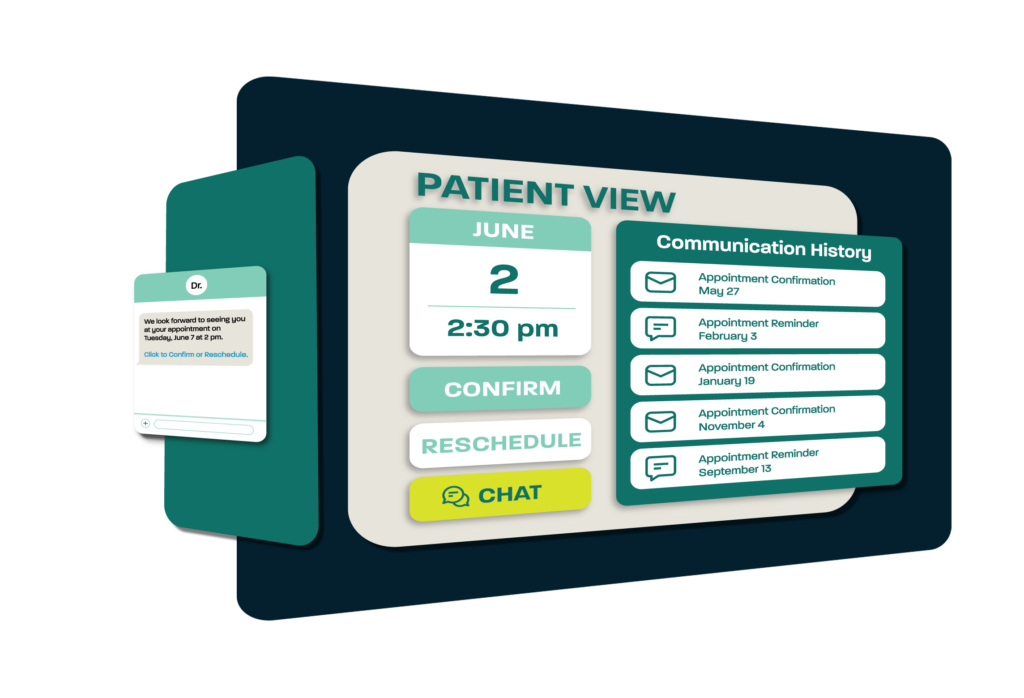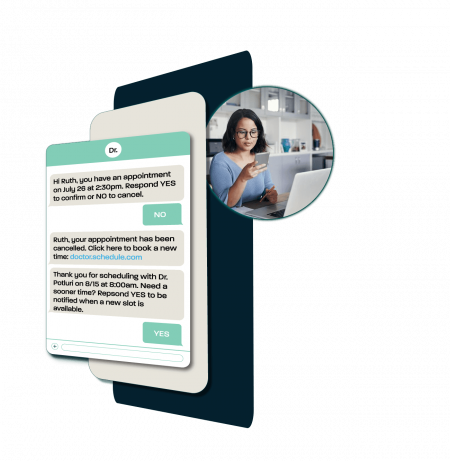Patients expect seamless care management, and Dash® delivers with personalized, timely messages for scheduling, reminders, and follow-ups – keeping them informed and engaged throughout their journey.
Simplify appointment coordination with tools that keep patients informed, reduce no-shows, and support continuity of care.


Enhance patient outreach with timely, personalized messages that keep patients informed and engaged.
Foster meaningful, HIPAA-compliant interactions with patients through flexible communication options that make it easy to stay connected.

We’ve seen a noticeable difference in how efficiently we communicate with patients. The automated reminders have significantly reduced the number of phone calls our team gets daily, and we’ve also seen a 60% increase in appointment response rates.
– Heidi Jungwirth, Patient Services Manager at ORA Orthopedics
| Keep patients on track and reduce no-shows with timely notifications about upcoming appointments. |
| Encourage patients to reschedule missed appointments or book follow-ups, ensuring continuity of care. |
| Effortlessly share important updates or announcements with groups of patients to keep them informed. |
| Promote wellness and preventive care with targeted outreach tailored to patient needs. |
| Gather valuable patient feedback to improve care experiences and satisfaction. |
| Enable secure, two-way communication for quick questions and updates, fostering stronger patient outcomes. |
| Provide real-time support with HIPAA-compliant chat for immediate answers to patient inquiries. |
| Improve collections and patient satisfaction by notifying patients about balances and payment options. |
Keep patients on track and reduce no-shows with timely notifications about upcoming appointments.
Encourage patients to reschedule missed appointments or book follow-ups, ensuring continuity of care.
Effortlessly share important updates or announcements with groups of patients to keep them informed.
Promote wellness and preventive care with targeted outreach tailored to patient needs.
Gather valuable patient feedback to improve care experiences and satisfaction.
Enable secure, two-way communication for quick questions and updates, fostering stronger patient outcomes.
Provide real-time support with HIPAA-compliant chat for immediate answers to patient inquiries.
Improve collections and patient satisfaction by notifying patients about balances and payment options.